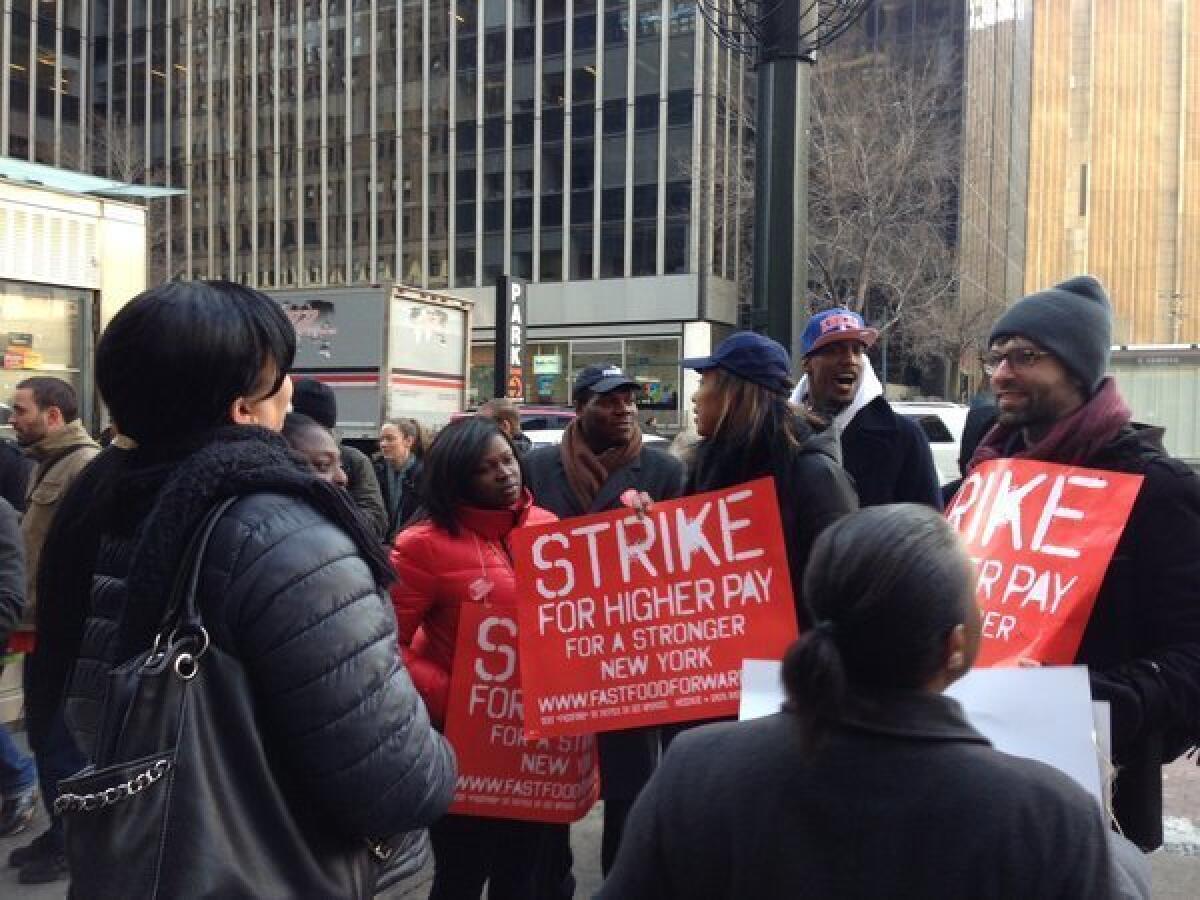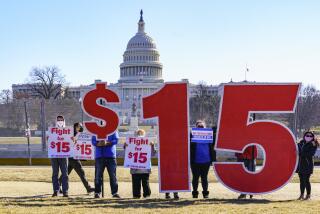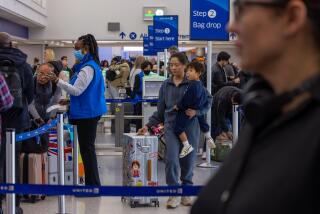Fast-food workers again protest for higher wages

NEW YORK -- How much should employers pay the people who serve up your french fries and ring up your tacos? It’s an issue that’s being raised for the second time in six months as hundreds of fast food workers in New York City walked out on the job Thursday to demand higher wages. An estimated 400 workers from 60 restaurants in Brooklyn, Manhattan and Harlem participated, organizers say.
The campaign, organized in part by the group Fast Food Forward, is asking for wages to be raised to $15 an hour, which in some cases would double the pay of some workers, raising their pay to around what a substitute teacher makes, or an emergency medical technician, according to data from the Bureau of Labor Statistics.
PHOTOS: The costliest bank failures
But workers say they need at least that to survive in the expensive world of New York City, and cited a study from a nonprofit that said that a New Yorker with two children who lived in the Bronx needed at least $28.85 an hour to be self-sufficient.
“It’s what we need. We’re not trying to make the Forbes list or anything,” said Cheikh Tall, 20, who was protesting at a Wendy’s near Pennsylvania Station. Tall, who has worked in fast food for four years, makes $7.50 an hour and uses it to support himself, his brother and his mother, both of whom have recently been laid off.
It’s true that wages have not always kept pace with inflation, and that cities such as New York are extremely expensive places to live. But economists such as Mark Zupan, dean of the University of Rochester’s Simon School of Business, say that raising the pay of minimum wage workers isn’t the way to help low-wage workers out of poverty.
In the first place, many of the people making minimum wage are high school students and others who don’t support families, and are just working at McDonald’s while attending school. And secondly, wages should be determined by supply and demand, he argues, not by how much someone needs to survive.
“The best possible way to determine this is through the markets,” he said. “It depends on how many people work in these jobs, and how much consumers are willing to pay for what a given worker produces.”
The better way to help minimum wage workers support themselves is give them access to more education so that they can train for a job that requires more skills, or one for which consumers are willing to pay more than a few dollars, he said.
“This noble idea ends up shooting ourselves in the foot,” he said of raising the minimum wage. “We aren’t targeting the help where it’s needed.”
But Jonathan Westin, the campaign director of New York Communities for Change, which helped to organize the protest, said that $15 an hour was a fair amount. Incremental increases to the minimum wage – a quarter here, a dollar there – isn’t likely to help workers stay afloat, he said.
“It can’t be incremental,” he said. “It needs to be something sustainable.... And the corporations can afford to pay their workers more.”
Supply and demand seems to be working well for economists – they are paid an average of $44 an hour, according to the Bureau of Labor Statistics. Fast food workers, on the other hand, are at the bottom of the BLS scale, making on average $8.78 an hour. Manicurists and childcare workers are also at the bottom of the list. At the top – psychiatrists, who make $83 an hour.
ALSO:
Push for minimum wage hike intensifies as ranks swell
Workers, buoyed by election results, are taking a stand
Fast food workers walk out in NYC amid rising labor unrest
More to Read
Inside the business of entertainment
The Wide Shot brings you news, analysis and insights on everything from streaming wars to production — and what it all means for the future.
You may occasionally receive promotional content from the Los Angeles Times.











